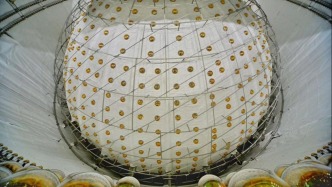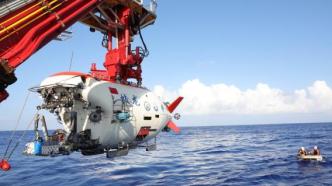
700 meters underground, deep in a quiet mountain in Jiangmen, Guangdong, a plexiglass ball with a diameter of over 35 meters is quietly capturing the "ghost particles" from the universe - neutrinos.
On August 26, the Jiangmen Neutrino Experiment (JUNO) officially began taking data. This major scientific facility, over a decade in the making, will address one of the most pressing questions in particle physics for the next decade: the ordering of neutrino masses.
Neutrinos are one of the basic particles that make up the material world. They are also the oldest and most numerous particles in the universe. They have been diffused in the universe since the Big Bang. They are everywhere yet "elusive" and hardly react with any matter. As a result, people not only cannot see them, but even detection is very difficult.
It wasn't until 1956 that humans first detected neutrinos in a nuclear reactor. Since then, neutrinos have become an important topic in physics research, but many mysteries remain.
Neutrinos are like a mystery left to humanity by the universe. As early as 2003, my country demonstrated and designed the first generation of neutrino experimental equipment - the Daya Bay Neutrino Experiment.
Now, the Jiangmen Neutrino Experiment has taken up the baton. It will not only answer the question of neutrino mass ordering, but also measure neutrino oscillation parameters with higher precision and explore supernova, terrestrial, and solar neutrino research.
The core of the detector of the Jiangmen Neutrino Experiment is a plexiglass ball loaded with 20,000 tons of liquid scintillator, and the outer wall is inlaid with tens of thousands of photomultiplier tubes. Once a neutrino reacts with it, it will emit a weak light signal - these signals will be amplified, recorded and analyzed, just like listening to the whispers of the universe in the deep sea.
Every step in building such a high-precision detector was a challenge. Ma Xiaoyan, chief engineer of the Jiangmen Neutrino Experiment, explained that the project team completed the pouring of over 60,000 tons of ultrapure water in 45 days, controlling the liquid level difference between the inner and outer plexiglass spheres to the centimeter level and ensuring a flow rate deviation of no more than 0.5%, effectively ensuring the safety and stability of the detector's main structure.
"This is the first time in the world that such an ultra-large-scale and ultra-high-precision neutrino-dedicated large-scale scientific facility has been operated, which will enable us to answer fundamental questions about the nature of matter and the universe," said Wang Yifang, academician of the Chinese Academy of Sciences and chief scientist of the Jiangmen Neutrino Experiment.
The Jiangmen Neutrino Experiment (JNIE) is led by the Institute of High Energy Physics of the Chinese Academy of Sciences (CAS), with a collaborative team of approximately 700 researchers from 17 countries and regions. From the invisible and intangible "ghost particles" to gradually unveiling their mysteries, the JNIE is a new window into the unknown universe.
According to the plan, the Jiangmen Neutrino Experiment is designed to have a service life of up to 30 years. It can be upgraded and transformed into a neutrinoless double-beta decay experiment in the later stage. It will detect the absolute mass of neutrinos and test whether neutrinos are Majorana particles, thereby solving the cutting-edge intersectional hot problems of particle physics, astrophysics and cosmology.

hjvxmzrvjsuoiqqirxvjulneuwvfrf